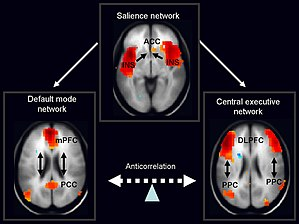The more I learn about personal and leadership development, the more convinced I become that the leadership development space is misstepping by not more fully considering neuroscience in leadership development.
Let me give some rationale for this position, and then dive into some of the details:
- Leaders’ effectiveness is based on their ability to make sound decisions
- The quality of leaders’ decisions is based on (1) the quality and complexity by which they perceive their world, and (2) their ability to stay emotionally regulated (among other factors)
- The quality and complexity by which leaders perceive their world and their ability to stay emotionally regulated almost solely rests on the quality of their body’s nervous system (as opposed to their knowledge or skills)
Leaders’ Effectiveness is Based on Their Ability to Make Sound Decisions
Consider some great leaders. Their effectiveness has been primarily predicated on their decisions.
- Abraham Lincoln decided to push for racial equality
- Martin Luther King, Jr. decided to advocate for nonviolent resistance
- Alan Mulally decided to take out the biggest loan in history despite Ford losing $12.7 billion the prior year (this allowed them to wade through the economic downturn of 2009 with a government bailout)
- Satya Nadella decided to prioritize culture when transforming Microsoft, which is now the world’s second most valuable public company
Also, consider some poor leaders. Their lack of effectiveness is rooted in their poor decisions.
- Jeffrey Skilling directed his people to engage in fraudulent activities to “cook” Enron’s books
- Travis Kalanick at Uber because he decided that an autocratic and aggressive leadership style would be a successful form of leadership (it led to the development of a toxic work culture including reports of him engaging in harassment, discrimination, and bullying)
- Elizabeth Holmes of Theranos made the decision to push forward false claims about the technology they were supposed to be developing.
What Commonly Prevents Poor Leader Decisions
There may be a number of factors that prevent leaders from making great decisions, but I want to highlight two main reasons.
First, in order for leaders to make sound decisions, they must be able to interpret their world accurately, and they must be able to take in the consideration of various perspectives.
For example, if one interprets mistakes as a setback, they may decide to make a policy to prevent mistakes. But, if one interprets mistakes as opportunities to learn and grow, they will develop a policy to do after-action reviews after any mistake to facilitate learning and growth.
Interpretation makes all the difference.
Further, if a leader only considers their own perspective and not the perspective of their various stakeholders, that leader is likely to make decisions that benefits themselves, but not others.
Second, in order for leaders to make sound decisions, they need to operate within a band of emotional control called our window of tolerance. When leaders get stressed and move outside of their window of tolerance, they lose emotional control, and are prone to make rash decisions that will ultimately settle their emotions, but may be catastrophic for their stakeholders (consider Jeffrey Skilling and Elizabeth Holmes).
The Role of Our Nervous System in Making Sound Decisions
Neuroscientists have revealed that there are three brain systems that control our ability to (1) interpret our world accurately and through different perspectives, and (2) regulate our emotions. They are our:
- Salience Network – Home of our emotions
- Default Mode Network – Home of our nonconscious processing and serves as an emotional regulator
- Central Executive Network – Home of our conscious thought and plays a role in our goal orientations

When these brain networks work effectively together, we have strong ability to (1) interpret our world accurately and through different perspectives, and (2) regulate our emotions. But, if these brain networks are not working effectively together, we have reduced ability to (1) interpret our world accurately and through different perspectives, and (2) regulate our emotions.
The degree to which our brain networks work together can be impacted in a couple of different ways:
- One network might overpower another network
For example, people who are hypervigilant have a salience network that overpowers the default mode network (a common consequence of psychological trauma).
- The connectivity between these brain networks might be weak (this is essentially ADHD)
When this happens, people struggle with inattention, impulsivity, time management, and task initiation and completion.
The Neuroscience of Leadership Operation
Thus, what neuroscientists are learning is that when leaders have issues with the connectivity and functionality of these three brain networks, they are going to have struggles in their leadership. Here is an incomplete list of issues that have been connected to poor connectivity and functionality of the three brain networks:
- Poor perspective taking
- Poor emotional intelligence
- Issues with impulsivity
- Issues with time management
- Limited ability to be self-aware
- Interpret one’s world in self-protective ways
- Egoistic tendencies
- Oppositional behavior
- Narcissism
- A variety of mental health issues including anxiety and depression
How This Applies to Leadership Development
Most leadership development efforts overlook neuroscience and the body’s nervous system. Thus, most development efforts focus on helping leaders gain new knowledge, develop more skills, and attempt to become more regulated. But, almost all of this effort does not connect to the root of the problem: poor connectivity and functionality of the salience network, default mode network, and central executive network.
Ultimately, if a leader has issues with the connectivity and functionality of the three brain networks, they are not likely to improve much as a leader until the connectivity is strengthened or the dysfunctionality is addressed.
There are a variety of ways to improve the connectivity and functionality of the three brain networks that involves various engagement levels. Let me start at the lightest engagement levels and go deeper:
- Fostering awareness of the brain networks, how they impact how we operate, and an evaluation of one’s own behavioral patterns which might reveal the quality of connectivity and functionality across the brain networks.
- Investigate the quality and sophistication of one’s mindsets. I use this Personal Mindset Assessment to determine the degree to which one is wired for self-protection and value creation. Direction can be provided on how to upgrade and rewire one’s mindsets.
- The therapies that have found to have the most positive impact on the connectivity and functionality of the three brain networks include EMDR, neurofeedback therapy, and psychedelic-assisted therapy.
If you want to integrate neuroscience into your leadership development efforts at the right and most appropriate level for your leader, let’s connect.











One Response